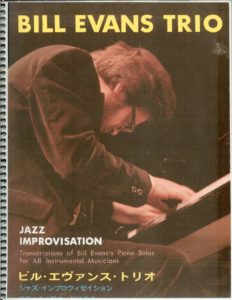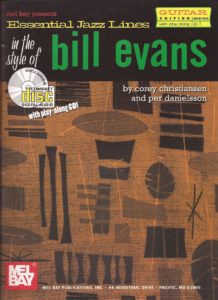Download Bill Evans’ sheet music and transcriptions from our Library.
Link to the video:
https://www.bilibili.com/video/BV1xf4y1y7XE/
Moon Beams is a 1962 album by jazz musician Bill Evans, and the first trio album recorded by Evans after the death of Scott LaFaro. With Chuck Israels on bass taking the place of LaFaro, Evans recorded several songs during these May and June 1962 sessions. Moon Beams contains a collection of ballads recorded during this period. The more uptempo tunes were put on How My Heart Sings!. In 2012, it was released a new remastered edition which includes three previously unreleased alternate takes.

Personnel: Bill Evans (p) Chuck Israels (b) Paul Motian (dr)
Released: Mid December 1962
Recorded: May 17, 1962 (#5,9) May 29, 1962 (#1, 8) June 2, 1962 (#2-4, 6-7) June 5, 1962 (#10-11)
Label: Riverside RLP-428
Producer: Orrin Keepnews
“Re: Person I Knew” (Bill Evans)
“Polka Dots and Moonbeams” (Johnny Burke, Jimmy Van Heusen)
“I Fall in Love Too Easily” (Sammy Cahn, Jule Styne)
“Stairway to the Stars” (Matty Malneck, Mitchell Parish)
“If You Could See Me Now” (Tadd Dameron)
“It Might as Well Be Spring” (Richard Rodgers, Oscar Hammerstein II)
“In Love in Vain” (Leo Robin, Jerome Kern)
“Very Early” (Bill Evans)
Writing for Allmusic, music critic Thom Jurek wrote of the album “…selections are so well paced and sequenced the record feels like a dream… Moonbeams was a startling return to the recording sphere and a major advancement in his development as a leader.”

Bill Evans, William John Evans (August 16, 1929 – September 15, 1980) was an American jazz pianist and composer who mostly played in trios. His use of impressionist harmony, inventive interpretation of traditional jazz repertoire, block chords, and trademark rhythmically independent, “singing” melodic lines continue to influence jazz pianists today. Born in Plainfield, New Jersey, in 1929, he was classically trained at Southeastern Louisiana University and the Mannes School of Music, where he majored in composition and received the Artist Diploma. In 1955, he moved to New York City, where he worked with bandleader and theorist George Russell. In 1958, Evans joined Miles Davis’s sextet, which in 1959, then immersed in modal jazz, recorded Kind of Blue, the best-selling jazz album of all time.

During that time, Evans was also playing with Chet Baker for the album Chet. In late 1959, Evans left the Miles Davis band and began his career as a leader, with bassist Scott LaFaro and drummer Paul Motian, a group now regarded as a seminal modern jazz trio. In 1961, ten days after finishing an engagement at the New York Village Vanguard jazz club, LaFaro died in a car accident. After months of seclusion, Evans re-emerged with a new trio, featuring bassist Chuck Israels. In 1963, Evans recorded Conversations with Myself, a solo album using the unconventional technique of overdubbing over himself. In 1966, he met bassist Eddie Gómez, with whom he would work for eleven years. Many of Evans’s compositions, such as “Waltz for Debby”, have become standards, played and recorded by many artists. Evans was honored with 31 Grammy nominations and seven awards, and was inducted into the Down Beat Jazz Hall of Fame.
Browse in the Library:
Or browse in the categories menus & download the Library Catalog PDF:
